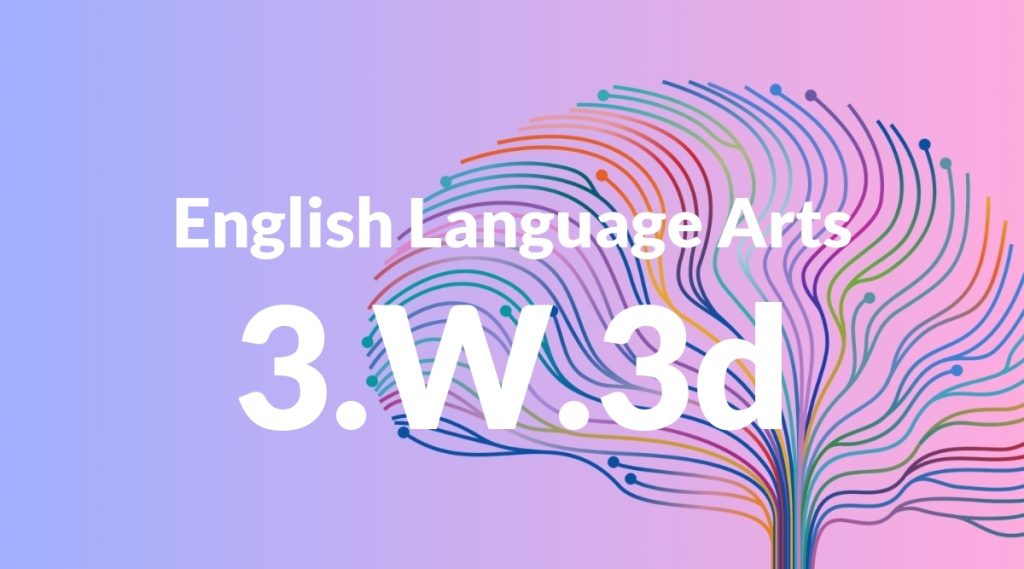Standard: 3.W.3d – Provide a sense of closure.
Grade level: Grade 3
Subject: English Language Arts
Domain: Writing
Teacher Overview
This standard focuses on helping students learn to provide a sense of closure in their writing. It’s crucial because a well-crafted conclusion can leave the reader with a lasting impression and effectively summarize the main points. Mastering this skill will help students in both creative and informational writing tasks. Students should understand story structure, including the beginning, middle, and end, and have experience writing simple narratives or informational texts. They should also be able to identify the main points in their writing.
After mastering this standard, students will be able to write more complex conclusions that summarize main points and reinforce the message or theme of their writing.
Common Misconception 1
A common misconception is that any ending will suffice, regardless of whether it ties up the story or essay. This is incorrect because a strong conclusion needs to revisit key points and provide a satisfying ending.
Intervention 1
Use graphic organizers to help students plan their conclusions. Have them list the main points they want to revisit and brainstorm ways to tie these points together in a satisfying way.
Common Misconception 2
Another misconception is that a conclusion is just a repetition of the last sentence or idea. This is incorrect because a conclusion should synthesize information, providing a final perspective or insight.
Intervention 2
Teach students to synthesize information in their conclusions rather than simply repeating themselves. Use examples and practice exercises to illustrate how to draw connections and provide final insights.
Prerequisite Knowledge
Students should understand the structure of a story or essay, including the beginning, middle, and end, and have experience writing simple narratives or informational texts.
Subsequent Knowledge
Students will develop the ability to write more complex conclusions, including summarizing main points and reinforcing the message or theme of their writing.
Instructional Activities
- Use graphic organizers to plan conclusions.
- Practice writing different types of conclusions for the same story or essay.
- Peer review sessions to give and receive feedback on conclusions.
- Read examples of strong conclusions from books and articles.




